A millennial multi-stemmed banyan tree in the village of Huoi Luong, Nam Lich commune, Muong Ang district (Dien Bien) makes everyone surprised when it has hundreds of honeycombs and produces tons of honey per crop.
People call this banyan tree the “honey tree” because its trunk and branches are covered with honeycomb with tons of delicious, premium wild honey.
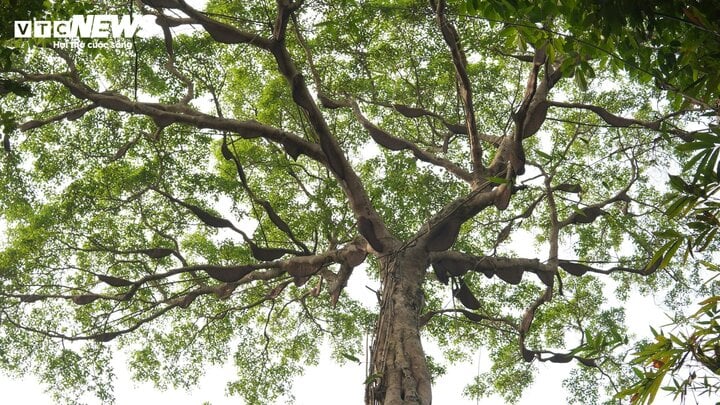
The ancient banyan tree is about 50 meters high…
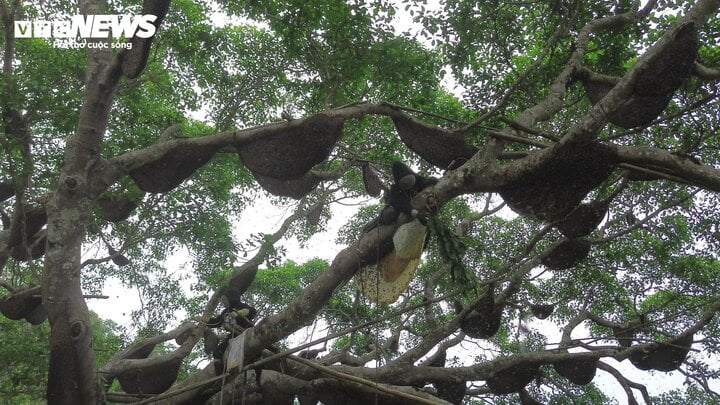
…has hundreds of wild bees making nests. (Photo: Trinh Hoai Nam)
Mr. Trinh Hoai Nam, the person in charge of exploiting honey this crop at the “honey tree” said: “Last year, there were 90 honeycombs on the tree. As for this year, the exploitation has not been completed, so the exact number is not known, but it is estimated to be over 130 combs. We cannot count them, because when counting, we will get confused about which branch is which.” .
According to Mr. Nam, the bees that make nests on this tree are wild bees, a type of honeybee that humans have not been able to domesticate, capture and raise to collect honey like regular honeybees. Therefore, the honey produced from the tree is a type of pure, natural, premium, delicious honey.
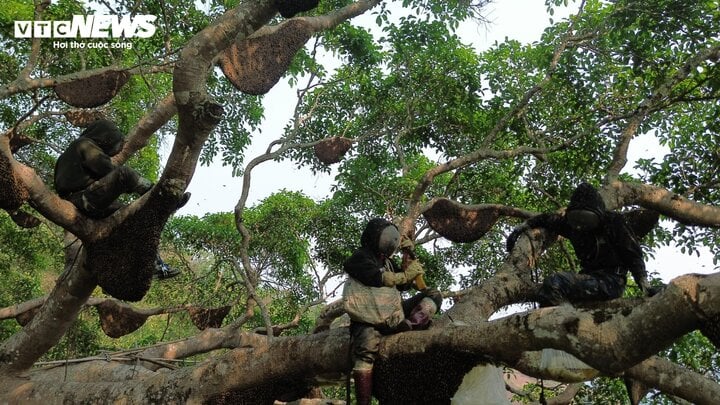
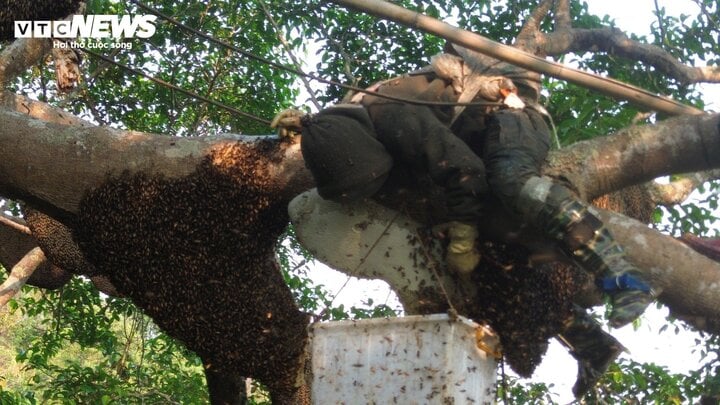
The group of exploiters had to risk many days on the tree to collect all the honey. (Photo: Trinh Hoai Nam)
This type of bee is quite picky. When exploiting, the exploiters deliberately left a part of the comb for the bees to continue to develop, but only a few combs continued to develop, while most of the other bees left. Therefore, each crop, each comb is only exploited once.
Every March, the wild bees come to make nests, and May is the time when the honey reaches its best quality and yield. People will proceed to exploit and collect honey. If not, at the end of the season, the bees will eat all the honey and leave for another place.
For more than ten years, wild bees have come to this tree to make nests every year. At first, there were only about 20-30 nests, the more time passed, the number of nests increased, so much so that they could not be counted. This year, the number of honeycombs on the tree is the highest in years.
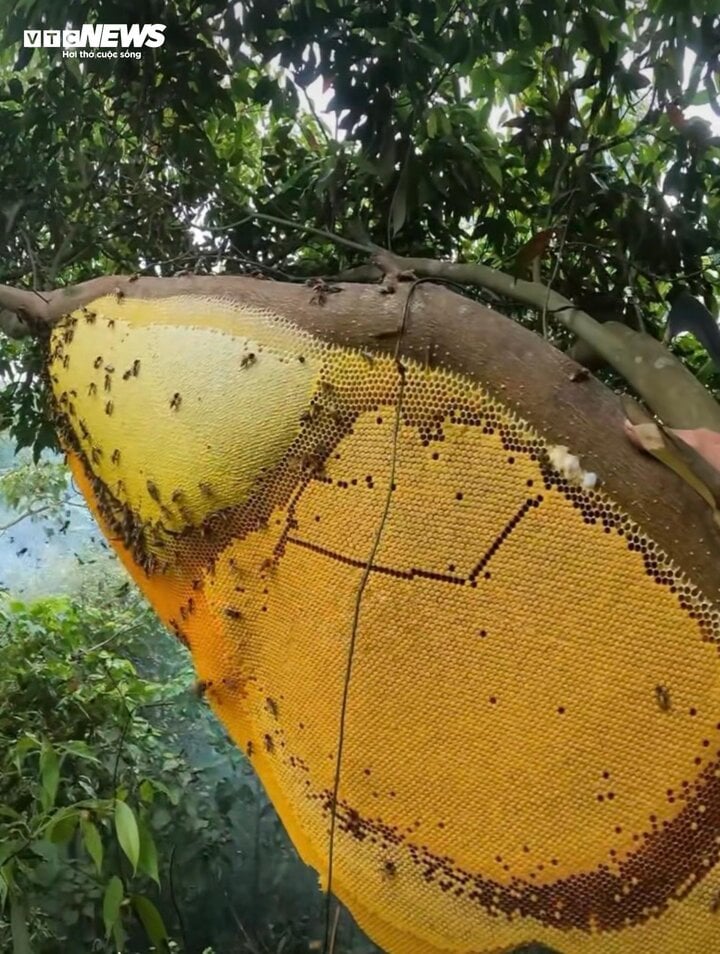
Each honeycomb can weigh up to 20-30kg. (Photo: Trinh Hoai Nam)
The honey tree is located in Huoi Luong village, Nam Lich commune, Muong Ang district (Dien Bien), and is protected by the people of the village and will only be allowed to be exploited by one person when a consensus has been reached and agreed upon by all the villagers.
This year, Mr. Nam is the person who “won the bid” for the tree. Mr. Nam had to pay a large sum of money to buy all the honey from this tree.
He said that the output of this year is estimated to be around 1.7 – 2 tons (including the comb and honey). For every 1.7 kg of honeycomb, 1 liter of honey can be squeezed out, which means that the output of honey in liters will be around 1,100 liters. Currently, this type of honey is being retailed by Mr. Nam on the market at a price of VND 550,000/liter.
The “honey tree” is about 50 meters high, in order to exploit the honey on the tree, the group of exploiters consisting of 5 skilled climbers must wear full protective clothing, attach a ladder to the trunk of the tree, and bring a safety rope to climb to each nest.
3 people in the group of exploiters must climb up the tree from 6am to 5pm. Two others assist on the ground. A whole day of exploitation like that can only yield about 12-23 nests.
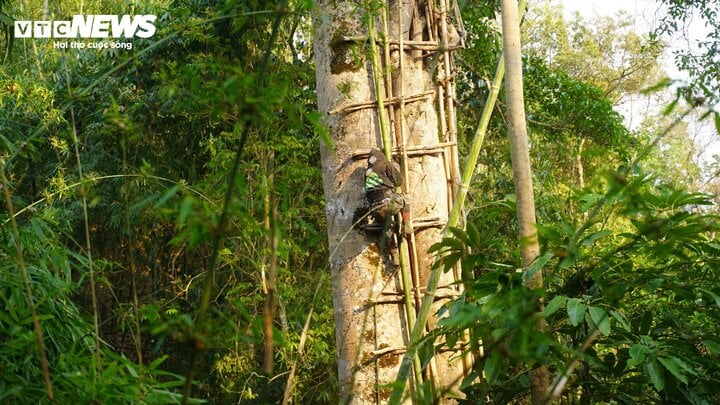
The group of exploiters must wear protective clothing, bring a safety rope, and attach a ladder to the trunk of the tree to climb up. (Photo: Trinh Hoai Nam)
“Although equipped with protective clothing and using smoke to drive away bees when collecting honey. But there are too many bees, sometimes covering the mask, making it difficult for the exploiters to breathe” , said Mr. Nam.
Mr. Vu A Long, the Party Secretary of Huoi Luong village, said that this ancient banyan tree has been around for a long time, but for about 15 years now, wild bees have flocked to make nests on the tree, bringing good luck to the villagers.
Thanks to that, the villagers have additional income from selling the honeycombs on the tree to traders for honey. When the bees make honey, the whole village joins hands to protect them, no one takes them for themselves. The exploited honey will be sold and the money will be distributed to all the households in the village.
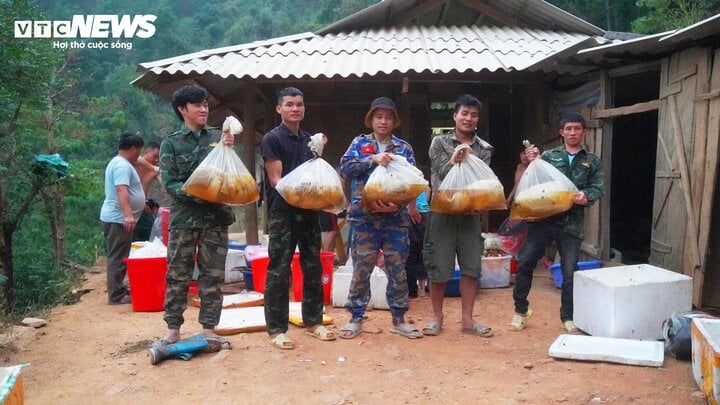
The money from selling honey at the “honey tree








































